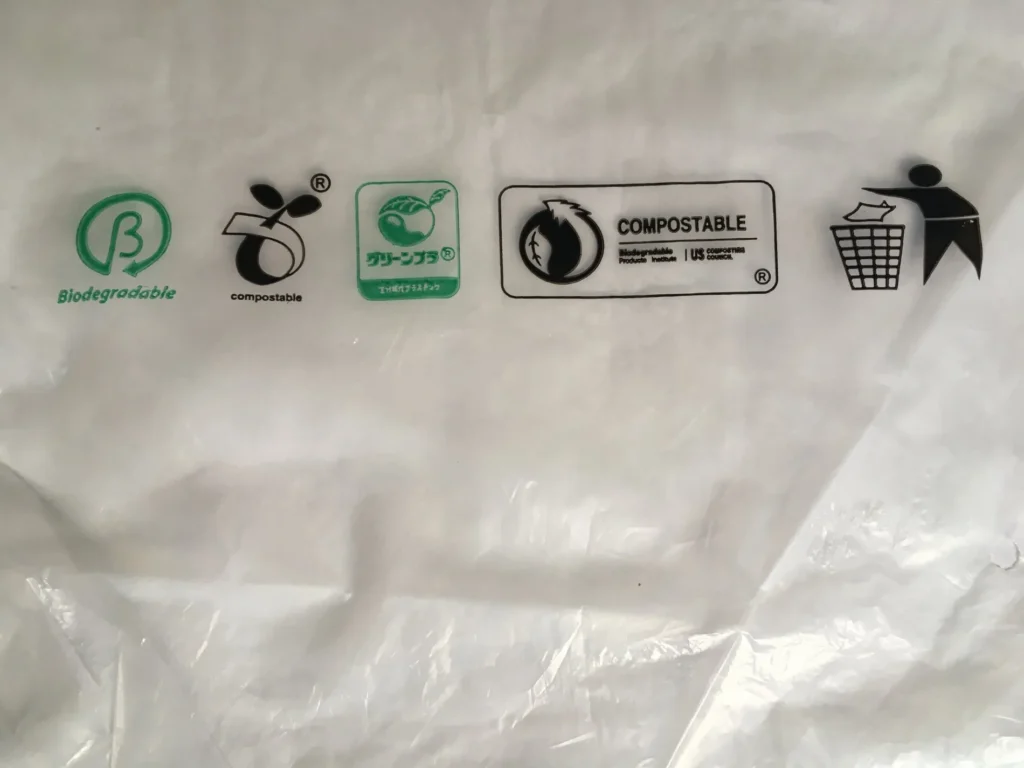PAR003_OE
Also called Bio-plastic: below an example of poly-bag made with bio-based plastic

Bioplastics are plastic materials produced from renewable biomass sources, such as vegetable fats and oils, corn starch, straw, woodchips, sawdust, recycled food waste, etc. Bioplastic can be made from agricultural by-products and also from used plastics (i.e. plastic bottles and other containers) by using microorganisms. Bioplastics are usually derived from sugar derivatives, including starch, cellulose, and lactic acid. Common plastics, such as fossil-fuel plastics (also called petrobased polymers) are derived from petroleum or natural gas. https://en.wikipedia.org/wiki/Bioplastic
Below an image of a fabric made mixing wool with bio-based (corn) polyester

Certifications? How to verify?
It is “new” situation we all are experimenting and there are institutional and political organisation working to define common standard.
Ny now there some notify bodies who follows chemical test in order to verify the origin of the plastic.
Bio-based content certification enables transparent and credible communication about the bio-based content of a product in the business-to-business and business-to-consumer communication, which not only involves the bio-based carbon content, but also the other elements hydrogen, oxygen and nitrogen. https://www.biobasedcontent.eu
Or “Ok-Biobased by TUV” on a basis of the determined percentage of renewable raw materials (% Bio-based), let a product can be certified as one-star-bio-based, two-star-bio-based, three-star-bio-based or four-star-bio-based.
https://www.tuv-at.be/green-marks/certifications/ok-biobased
